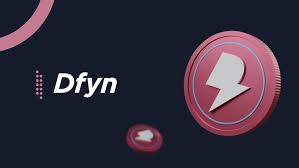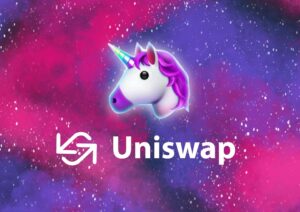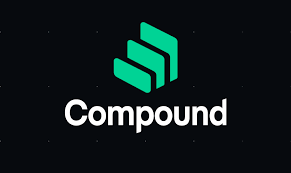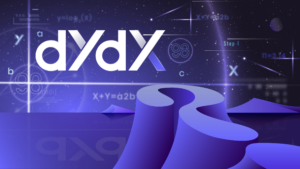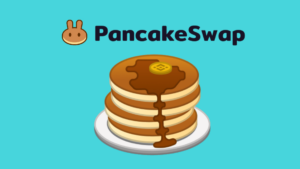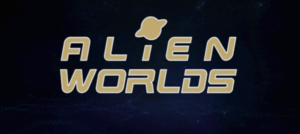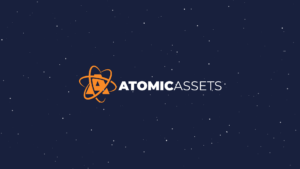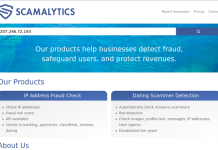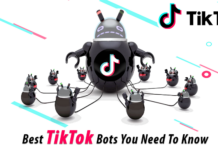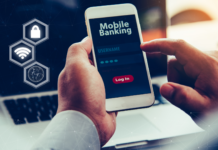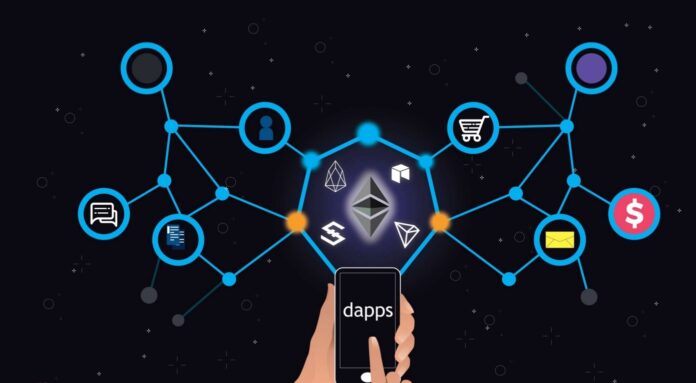
Complete guide About DApps will be described in this article. Contrary to what many people believe, the blockchain is not only reduced to cryptocurrencies, but everything indicates that it will be one of the most present technologies in our daily life in the future, all thanks to DApps, or because of their name in Spanish apps decentralized.
In this article, we are going to tell you what DApps are, which ones are the most important and what role they play in the blockchain, how they work and what their advantages and disadvantages are.
Are you new to cryptocurrencies?
If you want to start investing in cryptocurrencies, we recommend that you start buying your first tokens on Coinbase. If you deposit 100 euros by registering on OUR LINK, you will earn an extra 10 euros!
What are DApps?
DApps( Decentralized applications) are called decentralized applications, and as their name suggests, they are a special type of application whose operation is not based on a central server, but works thanks to a decentralized network in which all the users have the same control.
Now let’s see what are the top DAPPs in the global market at the moment. But this is something that is changing since we are currently facing the most dynamic market in the world, which is normal given its novelty and totally disruptive nature.
Top Defi DApps and Exchanges
In recent years we have experienced a real revolution in the world of DApps, which is why it is increasingly easy to find new and interesting applications.
1. Dfyn Network
Dfyn is a exchange AMM which allows operations cross-chain, i.e. between different blockchains. To do this, it has a set of liquidity pools which distribute the liquidity in the different chains and allow this type of exchange at low cost.
As a user, you can also contribute liquidity to the system to get returns on commissions paid by investors on trades. In addition, they have a safe system where you can bet the ROUTE token to earn fixed returns in DFYN, the native token of the Dfyn network.
2. Uniswaps
what is uniswapUniswap is a exchange decentralized (DEX) based on the blockchain Ethereum, so it is used to trade ERC20 tokens. In addition, it is a exchange MA( Auto Market Maker), so it works without the need for intermediaries.
Instead, it has liquidity pools where any user can deposit their cryptocurrencies to earn returns in the form of UNI, the platform’s native token.
It is currently one of the trades most widely used decentralized systems in the world DeFi, and more than $1 in cryptocurrencies are locked in his liquidity pools.
3. Compound
compound financial analysisCompound is one of the most popular DApps in recent years. His proposal is very simple: connect investors who want to make their cryptocurrencies profitable with users who need a loan.
So whenever you, as an investor, deposit cash into a liquidity pool compound, you receive a cToken which acts as proof that you have transferred these cryptocurrencies. When a user requests a loan, their interest is used to reward the platform and the liquidity providers.
But what if they don’t repay the loan? The Compound platform requires you to lock in 1,5 times the amount of cryptocurrencies you are going to borrow. In other words, if you want to apply for a loan of 1 USDT, you must block at least 000 USDT.
If you default on the loan, or the 1,5 collateral ratio goes down, your loan will be liquidated and the platform will hold your crypto to reward liquidity providers.
4. To swap the Polygon
ParaSwap Polygon is what is called a DEX aggregator, that is to say a exchange who examines others trades to offer its users the best exchange. So, if you want to trade BTC for ETH, ParaSwap will search through dozens of DApps to offer you the best deal possible.
Moreover, one of the main characteristics of this exchange is that it can act on the Ethereum network, the Polygon network and on the Binance Smart Chain, providing service for a large number of tokens and cryptocurrencies. Also check Onboarding Software
5. dYdX
dYdX is a exchange decentralized which brings a very ambitious proposition to the crypto landscape. At first, it may seem like one of dozens of DEXs based on the Ethereum network, but dYdX provides several additional features:
s- Trading on margin is to use leverage to be able to open larger trades than your account allows. This allows you to make more profit, but it is also more dangerous.
loans: users can give and take loans from the platform in a simple way. In addition, the funds used by investors who use trading on margin are obtained from here.
Trade with forward contracts: it has a specific section to speculate with futures contracts on the most important cryptocurrencies.
6. Pancake Swaps
Pancake Swap is a decentralized application built on top of the Binance Smart Chain that offers its users several ways to make money from their cryptocurrencies, either by trading on their exchange decentralized, or using other methods to earn passive returns on their crypto.
In this DApp, you can bring liquidity to the system, make Yield Farming, player with cryptocurrencies and even play the lottery to get CAKE, the native token of the exchange. Of course, all this anonymously and with the maximum possible security.
Other DAPPs
Contrary to what it may seem, the exchanges of Cryptocurrency and lending platforms aren’t the only DApps out there. Here you can see other decentralized applications that are sure to interest you:
7. alien worlds
Alien Worlds is a metaverse of NFT( Non-Fungible Tokens) in which users must complete missions to obtain NFTs with which to mine Trillium (TLM), the native token of the game.
This TLM token allows you to make governance decisions on the different planets of the metaverse, buy and upgrade your items, participate in certain quests, access restricted activities and bet for rewards. Also check ways to Design an Online Course
8. AtomicAssets
AttomicAssets is a place of market specializing in the sale and purchase of NFTs, a type of digital asset used by artists to securely sell their works online with the certainty that they cannot be duplicated.
This platform is used for both buying and selling assets, and is based on the WAX blockchain, a blockchain special for this type of function and which is 100% compatible with EOS.
9. Uplands
what is the highlandsUpland is a game where users can buy and sell real estate in the form of NFTs linked to real-world properties. The way to make these purchases is with fiat money or with UPX cryptocurrency, which you can buy with fiat money or earn by playing once you have properties.
These UPX cryptocurrencies cannot be exchanged for fiat to withdraw profits, but rather their function is to reinvest them to buy more NFT packages from Upland. However, you can sell your properties for fiat money to get your profits.
10. R-Planet
R-Planet is a video game based on a space mission in which you must obtain certain materials to complete the journey. These materials are obtained by mixing the 4 basic elements: wind, earth, fire and water, and to obtain them you need Ether.
Aether is the game’s native cryptocurrency, and to get it you need to stake out your NFTs. The amount of Ether you receive will depend on the quantity, quality, and rarity of your non-fungible tokens.
To play R-Planet you need a wallet blockchain WAX and compatible NFTs supported by R-Planet. Each time you obtain new materials that help the crew reach their destination, Mars, the game generates a special NFT with your name engraved on it.
DAPP history
If this is your first time hearing the term DApp, you’re probably thinking it’s a relatively new technology. But nothing could be different from the truth, one of the first decentralized Internet applications was BitTorrent, a file sharing protocol designed in 2001.
But if we talk about DApps that use the blockchain, the first of which was a resounding success was Bitcoin itself. However, the explosion of decentralized applications as we know them today only happened with the appearance of Ethereum in 2014, which made it easier to create and run smart contracts.
From that moment, and especially since 2017, the number of decentralized applications has continued to grow exponentially.
Characteristics of DAPPs
It’s likely that this stuff on decentralized applications sounds interesting to you but you’re not quite sure what differentiates them from centralized apps, right? Then you should take a look at their main features:
Decentralization
Of course, the main characteristic of DApps is their decentralization, which, as we explained earlier, is the non-dependence on central servers to run their services.
But what implications does this have?
When you log in to a centralized application, your data is stored with that of other users on a server which, as you can imagine, has a very high workload.
Not only does this dramatically increase maintenance costs, but a platform failure can leave millions of users without service.
However, decentralized applications do not depend on a central server, but as a user, your information and your movements in the DApp remain in your own history. Additionally, today’s DApps run on the blockchain, so they are still active and very secure.
Trigger Guards
Security and privacy in decentralized applications are very high. To begin with, being executed in the blockchain means that the data manipulated by the DApp can only be seen by the person who creates it, i.e. only you can see your information.
Second, your data never goes to a central server where it can be stolen or even sold by the company, but always stays on your device, improving your security.
Transparency
One of the most common characteristics of decentralized applications is that they have mechanisms that improve transparency compared to traditional centralized applications. One of the most appreciated by the
Community is that they are open source, i.e. anyone can analyze the application code.
This may seem unnecessary to most users, but the truth is that just as users can see your code, they can perform audits that thoroughly analyze the application to determine if it is safe or not.
How do they work
Although the operation of each DApp is different from the previous one, it can be said that they all work in a similar way to the other projects based on the blockchain .
First of all, it must be understood that each application user is a node within the network , therefore all are equally important and all are those who make its maintenance possible.
Every operation performed by users that is recorded as smart contracts or smart contracts, and in the same way as in other networks blockchain , it is the other users who validate that this operation has been carried out.
Thus, each user functions as a node that keeps the DApp upright and also works to ensure its integrity. Finally, and as we have already mentioned, DApps have security and confidentiality mechanisms that allow all these operations to be carried out anonymously and securely.
Pros and cons
Just like centralized applications, DApps have their positives and negatives.
Its main advantages are:
They offer greater security and privacy than centralized applications.
All DApp users have the same power and are equally important to the system, preventing some of them from abusing their power.
For these applications to work, it is enough that there are active users, who, after all, are the ones who perform all the functions of the application.
Generally, users can decide the direction of the platform using a voting system.
And his main drawbacks:
DApp code can become very complex, making it difficult to understand and audit.
The improvement of DApps is linked to the development and growth of the blockchain , which can sometimes become a limiting factor.
Some users may find it difficult to understand how it works.
Final opinion of DApps What is their future?
The concept of DApp may be very new and most people don’t know what it is, especially the over 50s, but it is a topic that is slowly catching on among younger users. The future belongs to them, but will it be a future where the main social and economic relations are done through DApps?
The truth is that today it still seems a long way off.
We are still facing a very small market, but many are saying that this is the future of human interactions, i.e. via decentralized applications. In this scenario, these DApps would only be the start of what would be a future virtual reality where humans can interact over the network.
The problem is rather to know how this Virtual Reality will be set up, and if it is something that will be voluntary or if on the contrary, there will be no other choice but to use it. It’s the latter that confuses me the most.
It seems that with the stakes of health and climate crisis, the governments of the world want to push humanity into a digital reality.
In this case, it is almost certain that the DApps phenomenon would develop very quickly, but there would also be many doubts on the horizon because we would be in totally uncharted territory, and even DApps could seem totally obsolete overnight. So say some gurus of the future, where technologies would see how others would easily overtake them faster and faster. Will this happen to DApps?
In principle, DApps start with the advantage that they could be the applications of the near future. I think other technologies are more at risk of disappearing.
